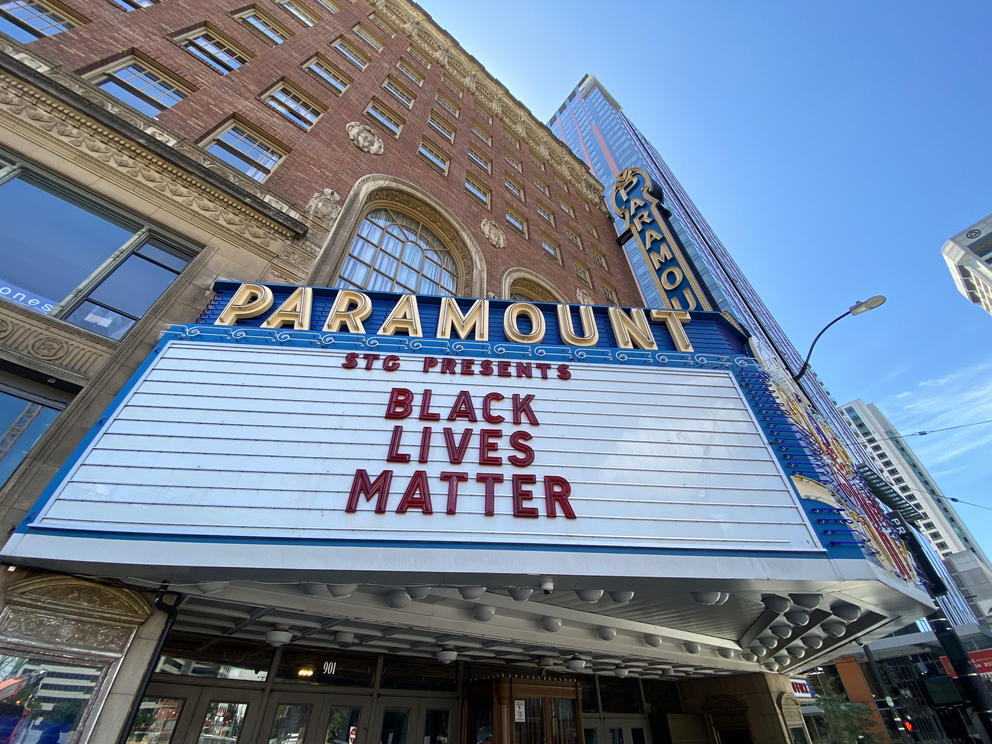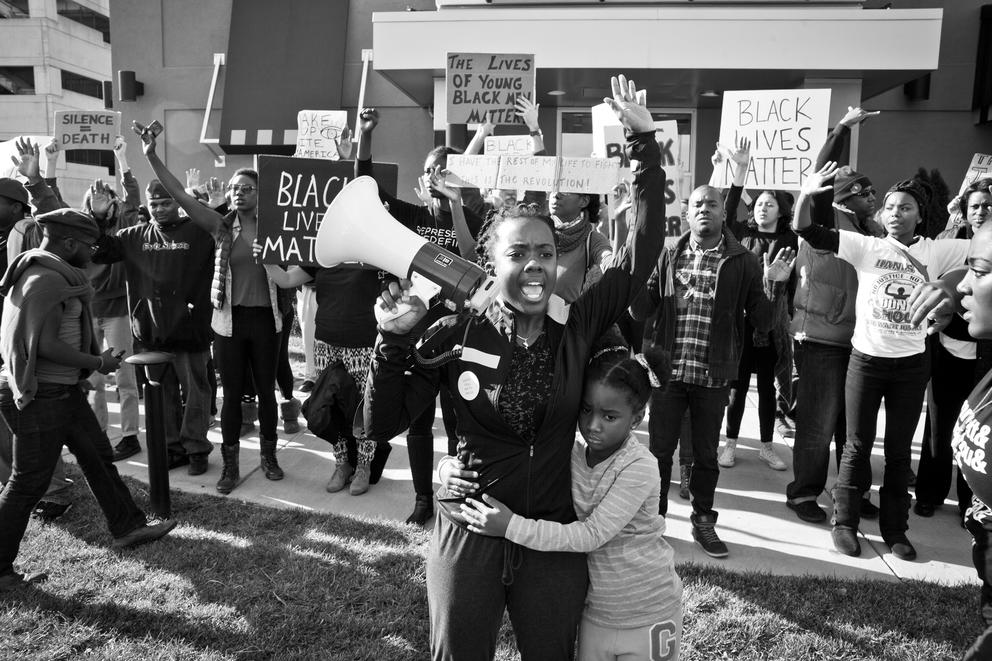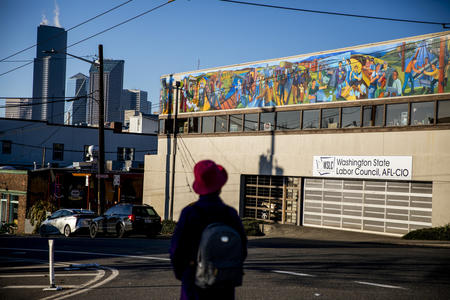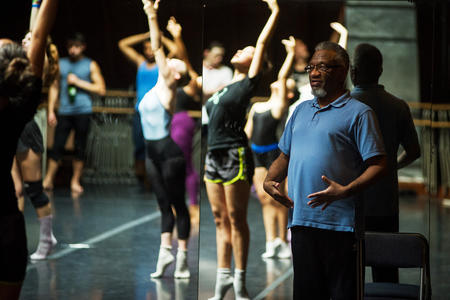“I recognize no dichotomy between art and protest,” said Invisible Man author Ralph Ellison, in a 1955 interview with The Paris Review. When your people have been subjugated for 400 years — through slavery, Jim Crow laws, segregation, police brutality, systemic racism — asserting your humanity is a political act, whether that assertion takes the form of marching in the streets or creating a work of art.
In Seattle, we are witnessing the entwined efforts of art and protest.
Last weekend, Seattle-based choreographer Donald Byrd, who for decades has prioritized Black history and social justice in his work, released a video of his dance piece SHOT. Performed by Spectrum Dance Theatre (Byrd’s company) at the Seattle Rep in 2017, SHOT addresses the long history of police officers killing unarmed Black people. In a street setting, dancers move in sequence with both arms up, chant “Don’t shoot!” and execute the complicated choreography of Black existence.
In his new introduction, Byrd writes that this free screening is for “those White people who say they stand with and want to partner with Black people and People of Color in the struggle to dismantle racism and white supremacy.” He urges the online audience not merely to observe the art, but to engage with it, asking yourself, “What are you doing to move the needle forward toward racial equality?”
On Tuesday, the Seattle Symphony & Opera Players’ Organization held an Arts March for Racial Justice and Equity. The small-scale, midday march proceeded from Benaroya Hall downtown to McCaw Hall at Seattle Center. The group of protesters carried signs reading “Black Lives Matter,” “We Must Do Better” and “American music is Black Music.”
At the end of the march, Crosscut’s Margo Vansynghel reports, speakers called for greater representation of Black artists in arts organizations, in terms of performers, leadership and repertoire of works. Referring to the organizational habit of programming Black artists only during Black History Month, pianist Joe Williams urged the crowd, “Let’s get Black composers out of February! Let’s get Black artists into curriculums, into symphonies!” Amanda Morgan, the only Black ballerina in the Pacific Northwest Ballet, said, “I hope for a world in which my presence is not a political statement.”
We’re currently experiencing “cinema vérité” on an unprecedented scale. “The most urgent filmmaking anybody’s doing in this country right now is by black people with camera phones,” says New York Times critic Wesley Morris in his column this week. Called “The Videos That Rocked America. The Song That Knows Our Rage,” the piece notes the importance of phone videos in documenting police brutality (George Floyd) and saving lives (birder Christian Cooper), all adding up to what Morris calls a “ghastly visual mosaic of mistreatment.”
Here, we can watch the revolution in progress, thanks in large part to citizen journalist Omari Salisbury, with local Converge Media, who has been livestreaming each day of the protests as they stretch into the night. Last night, he crossed the police line to speak with Seattle Police Chief Carmen Best, with whom he shared thoughts for keeping the peace. Watching Salisbury’s streams, I keep thinking he could edit them into a movie (at some quieter moment, when his currently hoarse voice returns). His visual documentation captures the tenor of this political moment with such immediacy, and such personality. What an education it could be for younger generations.
If that happens, it will have good company in the documentary Whose Streets? (2017), now available for streaming via Northwest Film Forum (June 4-30, $3.99), with proceeds benefiting funds and organizations that “protect and uplift Black lives.” The film documents the protests and militarized police response in Ferguson, Missouri, after police killed 18-year-old Michael Brown in 2014. Directors Sabaah Folayan and Damon Davis move the narrative away from what they call “riot porn” and into the lives of community members traumatized by the incident.
Protest can also take the form of supporting Black artists. On Wednesday, Seattle musician SassyBlack posted a call on Twitter for people to “BUY BLACK MUSIC” via Bandcamp on June 5 and July 3, days that the music hosting service will waive its revenue share (meaning more money goes directly to artists). “I expect y’all to buy Black on the platform and SHOW UP!” SassyBlack wrote. If you’re seeking out more local musicians to support, the Crosscut arts team recommends The Black Tones and Sol. Also check out the comprehensive list of Great PNW Black Artists You Can Support on Bandcamp from local music event producer Artist Home.
Music and art can reach across cultural barriers when it seems like nothing else will. In a 2019 interview with Crosscut, Donald Byrd acknowledged the importance he places on making work “related to social consciousness and the politics of being a Black person.” But, he emphasized, “It still has to be a piece of art. It has to do the thing that art does.”
I love that he says, “the thing that art does,” noting its mysterious power to make emotional connections. Art can punch you in the gut, extend solace or solidarity, make us uncomfortable, question our reality, crack open our minds, break our hearts, shake us awake — and insist that we stand up and make a change.
Get the latest in local arts and culture
This weekly newsletter brings arts news and cultural events straight to your inbox.








